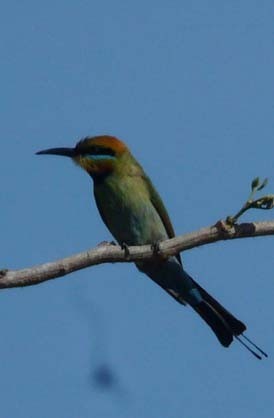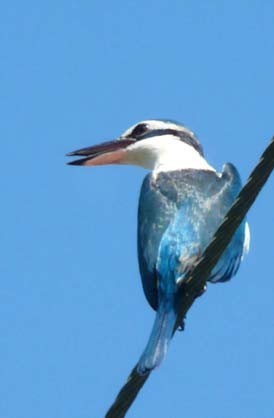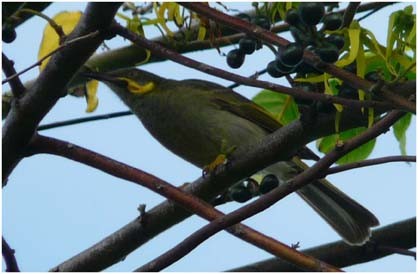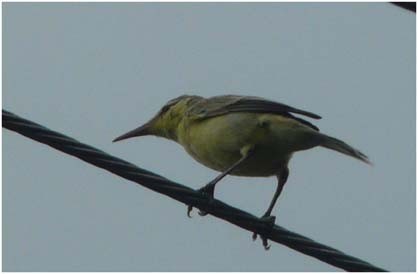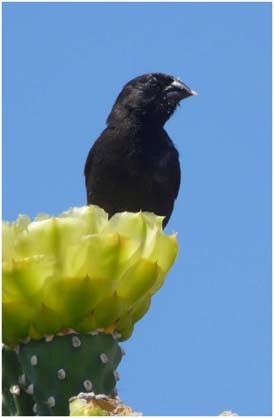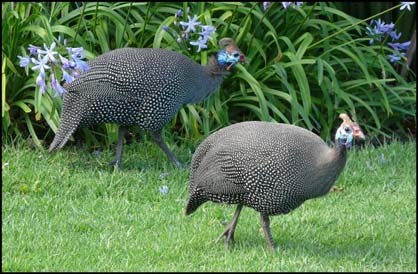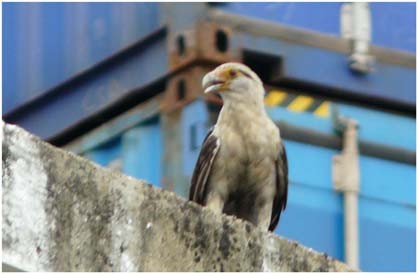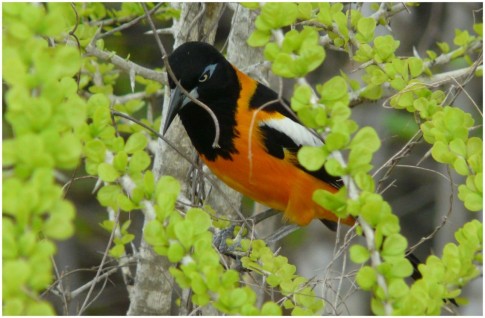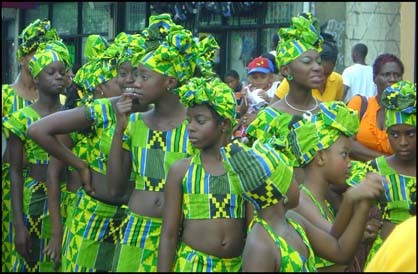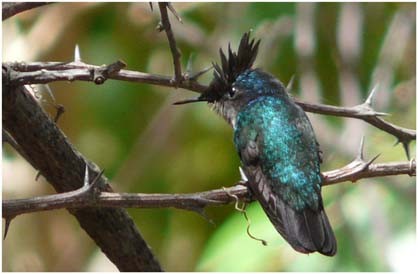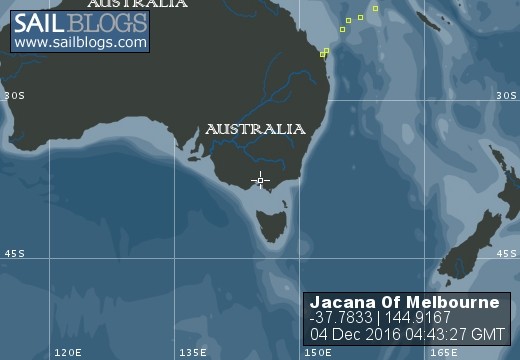Jacana's yarns
Sailing west about from Melbourne, Australia.
03 December 2016
17 August 2013
26 October 2011 | Bundaberg, QLD
04 October 2011 | On passage to Bundaberg, Australia
01 October 2011 | On passage to Bundaberg, Australia
26 September 2011 | On passage to Bundaberg, Australia
20 September 2011 | Port Vila, Vanuatu
10 September 2011 | Port Vila, Vanuatu
09 September 2011 | Port Vila, Vanuatu
08 September 2011 | On Passage to Port Vila
05 September 2011 | On Passage to Port Vila
02 September 2011 | Fiji
01 September 2011 | Lautoka, Fiji
18 August 2011 | Suva, Fiji
02 August 2011 | Suva, Fiji
24 July 2011 | On Passage to Suva, Fiji
21 July 2011 | On Passage to Suva, Fiji
17 July 2011 | Neiafu, Tonga
28 June 2011 | On Passage to Tonga
27 June 2011 | On Passage to Tonga
Birds we saw in the Galapagos
20 March 2011 | Wreck Bay, San Christobal, Galapagos
Yo and Dan Hellier
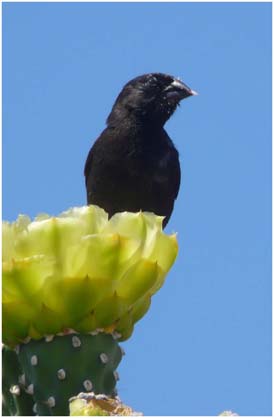
Cactus Darwin Finch
Chatham mocking bird (endemic)
Vegetarian Darwin Finch
Woodpecker Darwin finch
Cactus Darwin finch
Small ground Darwin finch
Warbler Darwin finch
Tree Darwin finch
Galapagos flycatcher
White cheeked pintail (endemic)
Common Galinule gallinulla chloropus (endemic)
Yellow warbler
Smooth billed arni (introdu ced)
Galapagos storm petrel
Galapagos or lava heron
Great blue heron
Yellow crowned night heron
Lava gull
Laughing gull
Nazca booby (now recognized as a different species to the masked booby)
Blue footed booby
Red footed booby
Magnificent frigate bird
Great frigate bird
Brown noddy
Brown pelican
Whimbrel
Sanderling
Wandering tattler
Semi palmated plover
Red billed tropic bird
Elliots storm petrel
We had a day with a local guide called Wilson Roja, who took us to the bird locations. This tour was organized by Sharksky especially for ourselves and was excellent.
We saw most of the Darwin finches that live on San Christobal, and many endemic species. The land tortoise rehab centre was good for these species.
A highlight was viewing the frigate birds washing in the fresh water volcano lake (El Junco).
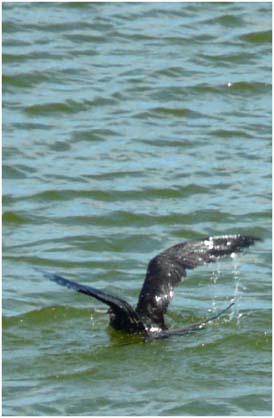
We had been under the impression that as the frigate bird finds it so difficult to launch into flight, it does not land in water. Not true. They in fact, come to the fresh water lake to clean the salt from their plumage.
They drop into the water for some seconds, take off and soar to a great height, then go into freefall, violently shaking their wings and feathers as they plummet.
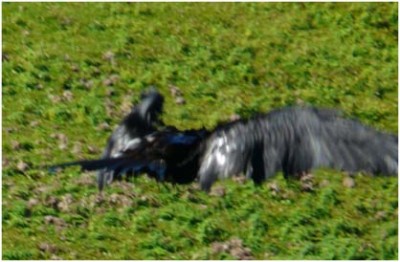
They pull out of their fall as they get nearer to the ground.
At Los Loberia, a beach on the south coast, we saw a surprising number of seabirds.
The Darwin finches are another story. Now they have been identified as tanagers. Every type of finch relates back to a pair of blue black type quits, but they have all adapted differently.
While many all eat the same food in the good years, when everything dries up they have adapted to survive in their own unique way.
The vampire finch has adapted to suck blood from red or blue footed boobies, the wood pecker finch uses a stick as a tool to extract lavae from the trunks of dead trees, yet another has learnt to survive on the lice from the giant land tortoises and iguanas.
Adaptability is the key, and it is the beaks that have primarily adapted in varying ways to suit the conditions of their particular terrain..
Chatham mocking bird (endemic)
Vegetarian Darwin Finch
Woodpecker Darwin finch
Cactus Darwin finch
Small ground Darwin finch
Warbler Darwin finch
Tree Darwin finch
Galapagos flycatcher
White cheeked pintail (endemic)
Common Galinule gallinulla chloropus (endemic)
Yellow warbler
Smooth billed arni (introdu ced)
Galapagos storm petrel
Galapagos or lava heron
Great blue heron
Yellow crowned night heron
Lava gull
Laughing gull
Nazca booby (now recognized as a different species to the masked booby)
Blue footed booby
Red footed booby
Magnificent frigate bird
Great frigate bird
Brown noddy
Brown pelican
Whimbrel
Sanderling
Wandering tattler
Semi palmated plover
Red billed tropic bird
Elliots storm petrel
We had a day with a local guide called Wilson Roja, who took us to the bird locations. This tour was organized by Sharksky especially for ourselves and was excellent.
We saw most of the Darwin finches that live on San Christobal, and many endemic species. The land tortoise rehab centre was good for these species.
A highlight was viewing the frigate birds washing in the fresh water volcano lake (El Junco).

We had been under the impression that as the frigate bird finds it so difficult to launch into flight, it does not land in water. Not true. They in fact, come to the fresh water lake to clean the salt from their plumage.
They drop into the water for some seconds, take off and soar to a great height, then go into freefall, violently shaking their wings and feathers as they plummet.

They pull out of their fall as they get nearer to the ground.
At Los Loberia, a beach on the south coast, we saw a surprising number of seabirds.
The Darwin finches are another story. Now they have been identified as tanagers. Every type of finch relates back to a pair of blue black type quits, but they have all adapted differently.
While many all eat the same food in the good years, when everything dries up they have adapted to survive in their own unique way.
The vampire finch has adapted to suck blood from red or blue footed boobies, the wood pecker finch uses a stick as a tool to extract lavae from the trunks of dead trees, yet another has learnt to survive on the lice from the giant land tortoises and iguanas.
Adaptability is the key, and it is the beaks that have primarily adapted in varying ways to suit the conditions of their particular terrain..
Comments
| Vessel Name: | Jacana Of Melbourne |
| Vessel Make/Model: | Northshore 46 |
| Hailing Port: | Melbourne Australia |
| Crew: | Dan & Yolanda Hellier |
| About: | Departed Melbourne April 2003. We have now finished our circumnavigation. Thought we might cruise down the east coast of Oz for a while |
Jacana Of Melbourne's Photos - Main
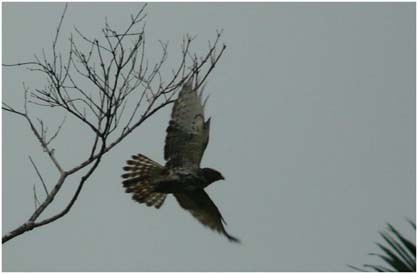 |
There are over 900 species of birds in Panama and 400 of them are in our jungle backyard at ShelterBay marina
21 Photos
Created 20 December 2010
|
 |
Regular visits to Oz allow us to travel via new countries and catch up with mates and family
1 Photo | 1 Sub-Album
Created 13 November 2010
|
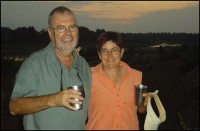
Who: Dan & Yolanda Hellier
Port: Melbourne Australia
